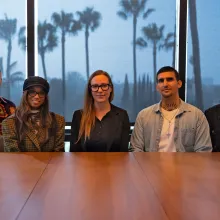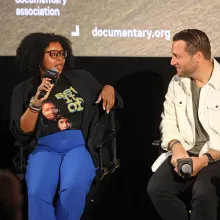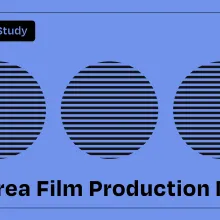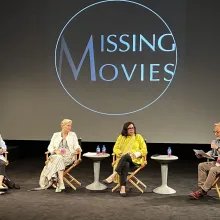The narrative content division of independent music rights company Concord develops unique fare in a sea of music documentaries: Although any project about Stax Records or featuring their music would legally and logistically require Concord to be involved, 'Stax: Soulsville U.S.A.' is unique in that it actually originated from the company itself. Officially launched in 2021, Concord Originals produces and develops projects based upon the million copyrights the company owns and represents, such as the music of Creedence Clearwater Revival, Rodgers & Hammerstein, and Cyndi Lauper.
Business
In its work with superstar athletes, Gotham Chopra’s full-service documentary studio maneuvers through tricky questions of access and creative control: Seven projects in production. Dozens more in development. And in the summer of 2024, three high-profile series about game-changing athletes: In the Arena: Serena Williams on ESPN+, Simone Biles Rising on Netflix, and Welcome to the J-Rod Show on FS1. Religion of Sports (RoS) is on a roll, having achieved a scale and consistency quite remarkable for a documentary production company.
It’s not called the Sundance “International” Film Festival, but it has become increasingly so, becoming one of the most vital global launchpads for nonfiction work. Despite the fact that there have yet to be any flashy global streamer deals (or even smaller sales) announced for any of this year’s documentaries, the industry’s wheels are churning. Highly praised films, such as Geeta Gandbhir’s riveting Directing Award winner The Perfect Neighbor and David Osit’s complex media exposé Predators are likely to find buyers soon, while at least one of the festival’s World titles was scooped up for international sales.
In 2008 and 2019, in Documentary magazine, I published documentary budgeting articles and budget templates that have been read and used widely all over the world. I’m thrilled to return with a big update that includes: (1) a fully revised budget template that has been updated for 4K and streamer deliveries; (2) for the first time, a schedule template; (3) numerous new budget line items related to accessibility for film crews, participants, and audiences; and (4) a bigger reorganization to make the template more flexible and universal. The article has also been expanded and extensively rewritten.
Now, while there may be greater attention to filmmakers’ proximity to their subjects and a push for more diverse directors, co-directors, producers, and crew members, there’s also a rise in what some call “cover-your-ass” hires over meaningful collaborations. If the U.S. industry, then, has accepted that documentary projects benefit from having creatives from similar races, genders, sexualities, or nationalities as their subjects, they might be included—but are they actual partners?
To counter the decentralization of local film production, BAVC Media (Bay Area Video Coalition) has just released the Bay Area Film Production Memo
Whether we are unemployed creatives, overwhelmed freelancers, or underpaid employees, it can often seem like everyone else has figured it out. Social media is a constant stream of people announcing new jobs, festival screenings, and prestigious grants and awards. Yet more often than not, the filmmaker who had the big premiere, received all the accolades, and even successfully sold their film is still struggling to get by, just like the rest of us. So how are filmmakers actually making a living?
A dizzying, fast-paced, 150-minute montage about American jazz, Western imperialism, European colonization, and the assassination of Congolese
As the theatrical market for arthouse and documentary films continues to recover from the many challenges of the COVID-19 pandemic, it may not seem
In November 2020, a group of filmmakers met via a Directors Guild of America Zoom panel to discuss a harrowing commonality: missing films. On this














